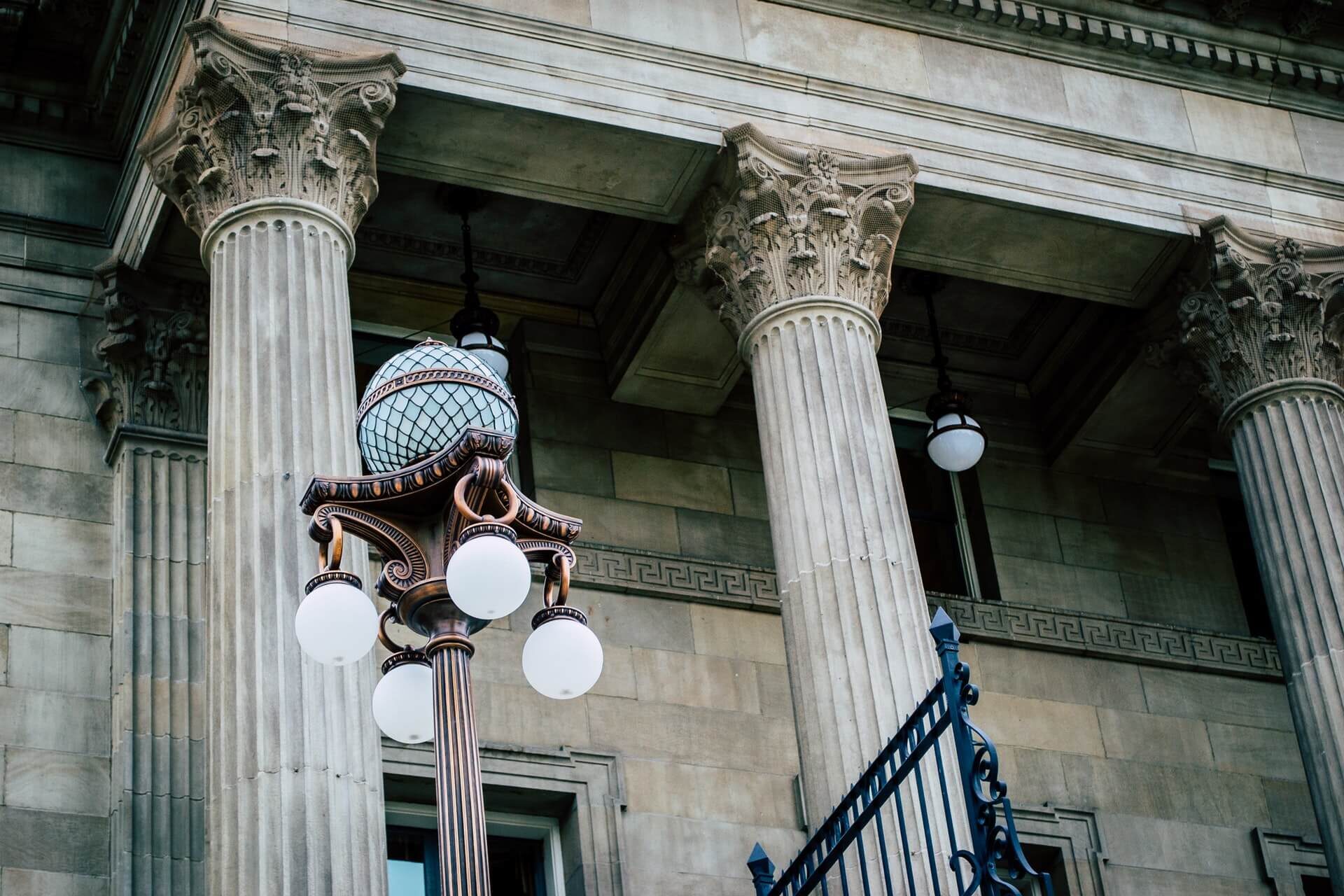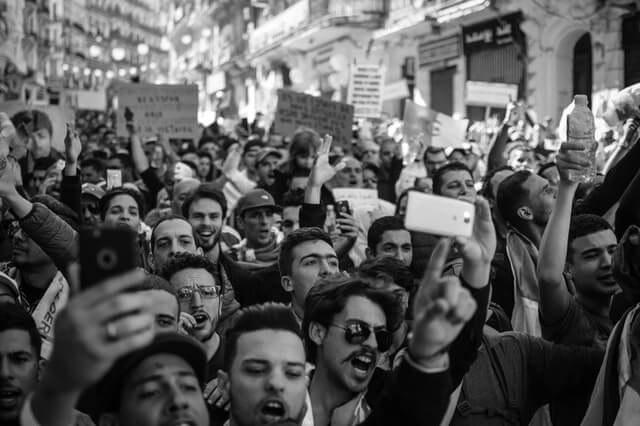Protest At Shaheen Bagh In Light Of COVID-19

________________________________________________________________________________
This Blog is written by Devleena Prasad from Symbiosis Law School, Noida. Edited by Harshita Yadav.
________________________________________________________________________________
The Citizenship Amendment Bill (CAB) assumed the status of an act when the President of India gave his assent to the same on 12th December, 2019. Although the bill was supported and celebrated by the majority of the nation, it marked the beginning of the longest protest in independent India as it was viewed to be discriminatory by a few sections of the society. Following the same, the protests against the bill initiated in mid-December at Shaheen Bagh, an area in Delhi, the national capital of India. The protest gained its momentum within days and the protestors blocked the Delhi-Noida road, causing heavy inconvenience to other residents of NCR. Similar protests broke out in different parts of the country. However, the protest at Shaheen Bagh set an example and continued over 100 days. It was a significant protest in Indian history as it was a peaceful protest and was majorly run by the Muslim women who proved that they could fight for themselves. The protestors stayed on Shaheen Bagh, twenty-four-seven for over 100 days despite the several attempts made by the Delhi Police, the Delhi Government, and the Indian Courts to vacate them.
The protest finally came to an end after the Delhi Police removed the protestors in the month of March 2020, after the Government of India and the Government of Delhi announced a complete lockdown owing to the coronavirus. The center and state made guidelines restricting the number of people to less than 50 for all gatherings. However, the protests did not end immediately after the formation of the aforementioned guidelines as the protestors made efforts to follow the same. The protest survived the Janta Curfew declared by Prime Minister, Mr. Narendra Modi and the initial days of the lockdown. It was only after the National Commission for Protection of Children (NCPCR) wrote to the District Magistrate of South-East Delhi and asked them to submit a report concerning the Shaheen Bagh protest in light of the coronavirus and Delhi Government’s guidelines within three days, that the Delhi Police removed the protestors and the protest finally came to an end. The protestors however resisted and made efforts to keep the protest going. They were willing to die of the coronavirus than being tortured in the detention centers.
Removing the protestors from Shaheen Bagh was celebrated by a number of people in the nation for two primary reasons including empowerment of the Citizenship Amendment Bill and the safety of people with respect to health. However, the Delhi Police and Delhi Government removed the protestors using the defense of the significance of health in light of the pandemic. Owing to the spread of the virus because of touch and sneezing, they considered the protest a potential threat for the virus’s widespread. Coronavirus’s spread in the country was accelerated due to the Tablighi Jamaat Markaz gathering at Nizamuddin and the concerned health authorities feared the same with the protest. Therefore, to restrict the spread of the virus and protect the nation, it was imperative to end the protest by removing the protestors from Shaheen Bagh. Since the protestors blocked the road, Delhi-Noida route in this scenario, the protest caused inconvenience to those who needed to travel. In light of the COVID-19, the blocking of the road could have prevented people from receiving appropriate health care as the protests made traveling inconvenient. It was thus very essential to secure convenient traveling routes for the ones in need in light of the virus. The right to protest and assemble, as guaranteed by the Constitution of India, does not, in any form, give the protestors the right to cause difficulties in the lives of other citizens of the nation. Protest can be viewed as a threat to the lives of Indian citizens in the light of the COVID-19 pandemic and thus endangers the nation as a whole. Furthermore, the State and Central Government made guidelines on gatherings. They restricted the maximum number of people to 50 in a gathering. According to the reports and observations made of the protest in the lockdown, the number of people assembling at Shaheen Bagh often exceeded 100 and therefore violated the guidelines formed by the state and central government. This violation of the guideline rendered the protest as an ‘unlawful assembly’. Therefore, the defenses used by the Delhi Government and Delhi Police are justified in the light of the pandemic. Their acts of removing the protestors are justified as they are intended to protect the nation from the ongoing coronavirus which has caused hardships to the entire world.
The protestors however were unhappy with it. They were in no way willing to end the protest. Undoubtedly, it was a landmark protest and had drawn the attention of the entire nation towards it. The protestors had bravely raised their voice against the acts of the government. Despite being a minority, they fought for their rights through this protest. The protest at Shaheen Bagh gained global awareness. They claimed to have taken full precautions in light of the coronavirus and thus were not convinced of the grounds which were used by the Delhi Government and Delhi Police to remove them. They claimed to have reduced the number to less than 50 and on certain days even less than 25 in light of the guidelines and the lockdown. They even practiced social distancing during their protests and increased the number of benches and mattresses. At any moment, they had a doctor and certain medical equipments with them. They scanned the temperature of every protestor every day in the morning and the hands of the protestors were sanitized in the intervals. Thus, they claimed to have taken complete precautions owing to the virus. According to them, coronavirus was an excuse used by the respective authorities to remove them and end their protests. They used the defense of involuntary institutions such as relief camps and centers being upon in the lockdown. However, they were advised by the lawyers and medical teams of their protest to end it as it endangered their lives and the ones surrounding them. Even the activists and youth organizations such as the Democratic Youth Organization of India advised them against the continuance of the protest in the pandemic.
The protest which continued for over 100 days finally came to an end. It is unprecedented in several ways. Although it failed to achieve the ultimate purpose of striking down the Citizenship Amendment Act (CAA) and National Register of Citizens (NRC), it did achieve certain milestones. It proved that a minority was capable of fighting for their rights and their place in India. It strengthened the position of Muslim women in the community as they fought a battle which was not solely theirs. It brought to light, the discriminatory practices of the country and attracted the attention of the entire nation. It was successful enough in initiating a fight against injustice and establishing a path. The ending of protest at Shaheen Bagh does not make the movement to fight injustice lose its importance and significance. As mentioned early, the protest achieved milestones and sets a precedent. A precedent that will enable the weaker and vulnerable sections of our society to fight for themselves. It will instill courage in those who are afraid to fight for their rights.
However, the importance of health, in no manner can be compromised. Health still continues to be the most important concern for the nation. The protest at Shaheen Bagh which continued for over 100 days was a peaceful one. The protest in light of the coronavirus became a potential threat to 1.3 billion citizens of India. It was therefore imperative to end the protest and protect the lives of Indian citizens including the ones protesting. Even after 6 months of the conception of coronavirus, it continues to be a major threat to the world. Delhi continues to be majorly affected by the virus and the protest at Shaheen Bagh would have just worsened the situation of the city. The end of the Shaheen Bagh protest is for the benefit of the nation and the welfare of its citizens. The efforts taken by the nation, especially by its selfless health care service providers and the police officers would have ended up in a vein had the protest been allowed to continue. It is imperative to understand the limitations and act accordingly. Therefore, it was very essential that the protestors understand their limitations due to the pandemic, and act accordingly. A new approach is required to continue and re-establish the historic protest. An approach that is unique in its way, has the same momentum and one which does endanger the environment surrounding it. An approach that is well equipped of its limitations but still continues to be a powerful one. The protestors at Shaheen Bagh fought with all they had. The end of the protest does not mark a defeat for them and the protestors should not feel disheartened. They have just taken a step back, which is imperative to move forward even stronger.

